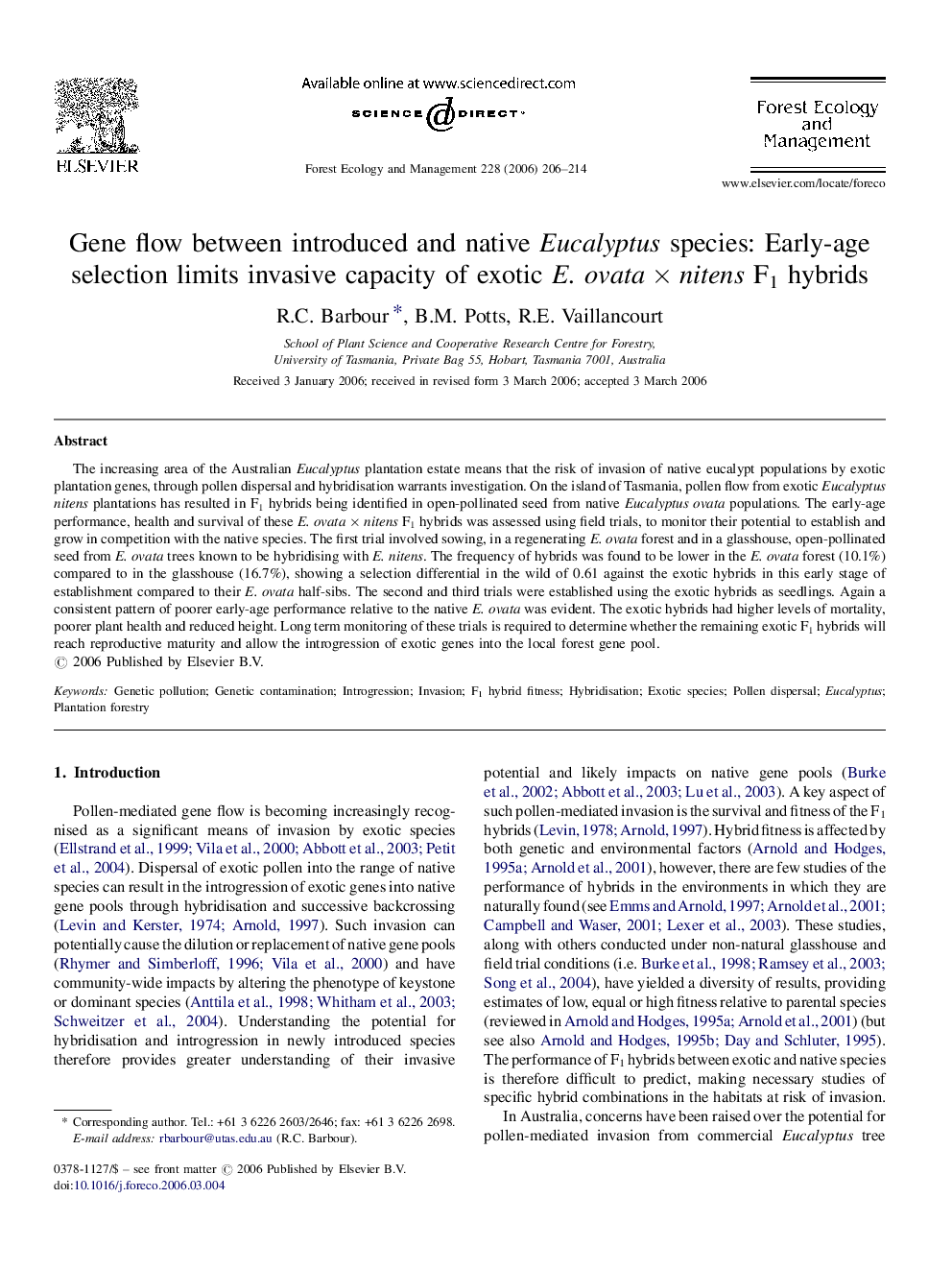| Article ID | Journal | Published Year | Pages | File Type |
|---|---|---|---|---|
| 90908 | Forest Ecology and Management | 2006 | 9 Pages |
The increasing area of the Australian Eucalyptus plantation estate means that the risk of invasion of native eucalypt populations by exotic plantation genes, through pollen dispersal and hybridisation warrants investigation. On the island of Tasmania, pollen flow from exotic Eucalyptus nitens plantations has resulted in F1 hybrids being identified in open-pollinated seed from native Eucalyptus ovata populations. The early-age performance, health and survival of these E. ovata × nitens F1 hybrids was assessed using field trials, to monitor their potential to establish and grow in competition with the native species. The first trial involved sowing, in a regenerating E. ovata forest and in a glasshouse, open-pollinated seed from E. ovata trees known to be hybridising with E. nitens. The frequency of hybrids was found to be lower in the E. ovata forest (10.1%) compared to in the glasshouse (16.7%), showing a selection differential in the wild of 0.61 against the exotic hybrids in this early stage of establishment compared to their E. ovata half-sibs. The second and third trials were established using the exotic hybrids as seedlings. Again a consistent pattern of poorer early-age performance relative to the native E. ovata was evident. The exotic hybrids had higher levels of mortality, poorer plant health and reduced height. Long term monitoring of these trials is required to determine whether the remaining exotic F1 hybrids will reach reproductive maturity and allow the introgression of exotic genes into the local forest gene pool.
